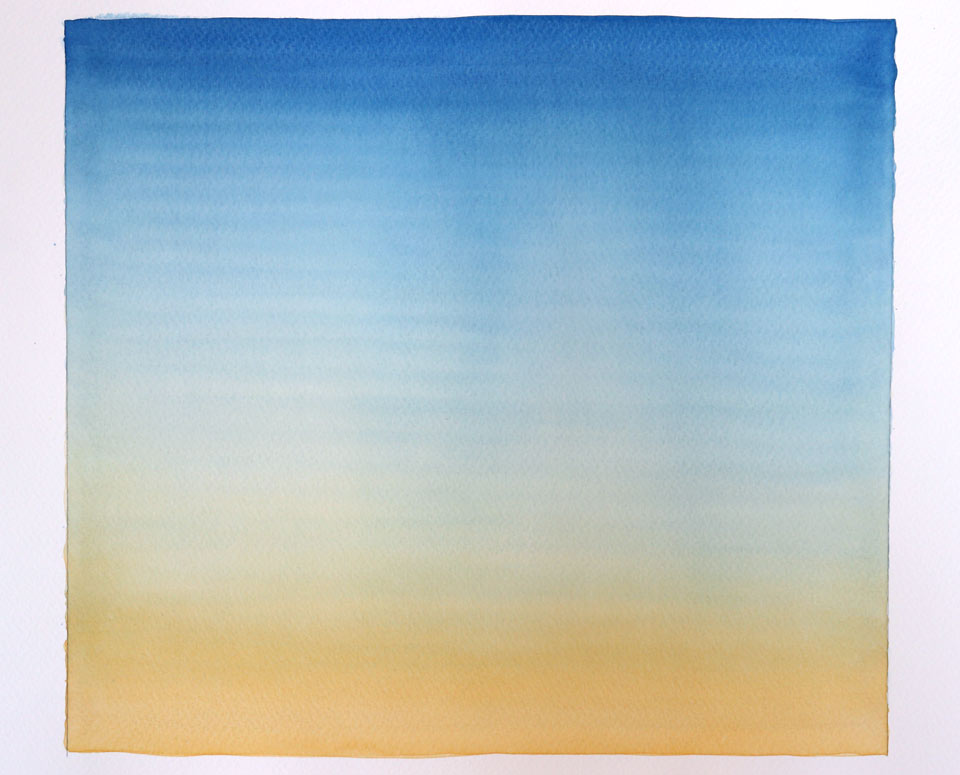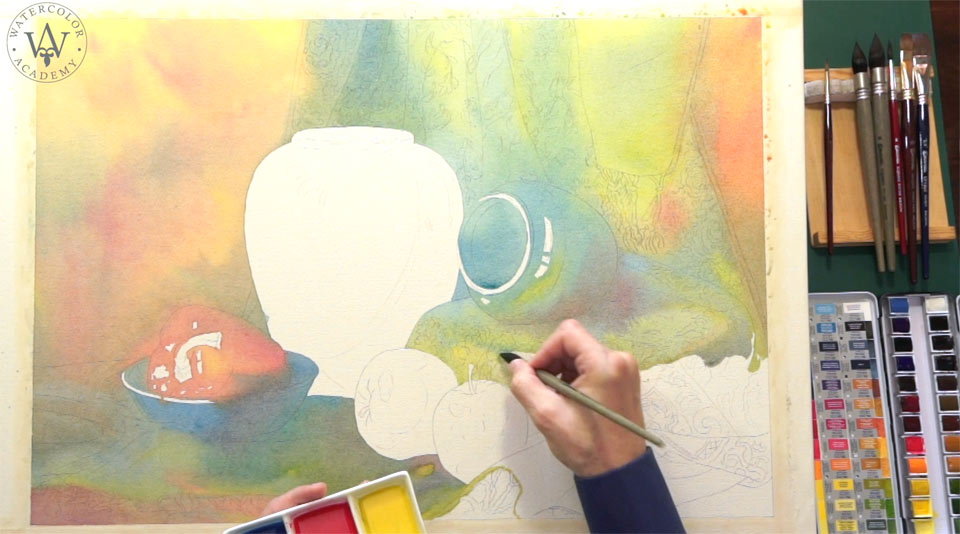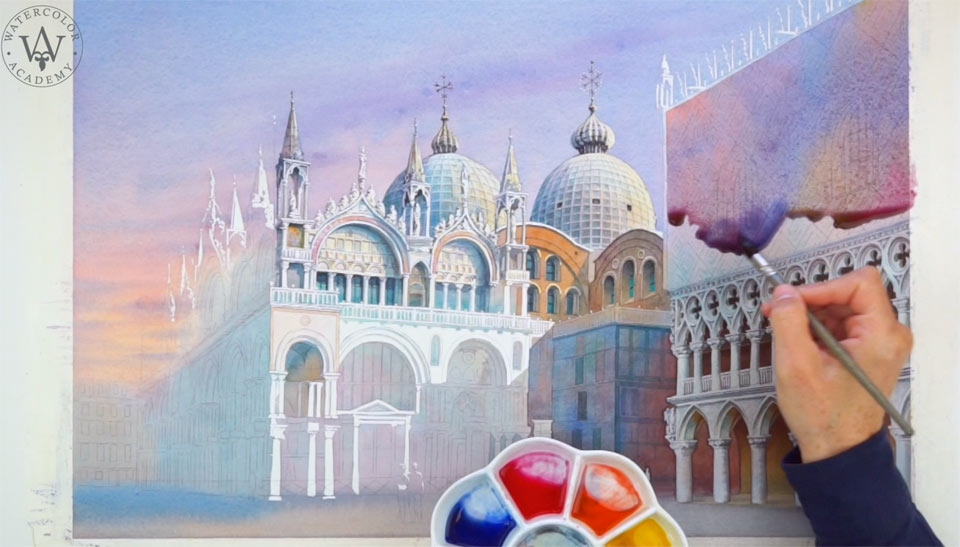A self-study, self-paced course where you can learn how to paint in watercolor by watching video lessons and doing assignments
$297 USD
ENROLL NOWA self-study, self-paced course where you can learn how to paint in watercolor by watching video lessons and doing assignments
$297 USD
ENROLL NOWOne-to-one, unlimited and custom-tailored to your skills and needs Personal Tutoring by the Watercolor Academy teachers
$997 USD
ENROLL NOWVideo lesson by Vladimir London
In this video lesson, you will discover what a variegated wash is and how to apply this wash method when creating watercolor paintings. To explain the variegated wash, I will use three examples from the Watercolor Academy course.
In the first example, I will show you how I used a variegated wash when making this still life painting. The name of this painting method – 'variegated wash' – implies that several colors are used in this wash.

First of all, I have to decide which colors to use. In this particular artwork, there were only three colors.
Before deciding on which colors to use for the wash, it is a good idea to test different color combinations and to see how they look together.
After you have decided on which colors to use, the next step is to pre-mix the chosen pigments. It is better to prepare more paint than you think you need, rather than run out of mixed pigments in the middle of the job. I apply the mix using a round, soft brush from Escoda. This mop brush absorbs a lot of liquid and releases it onto the paper surface nicely.

I am painting the liquid paint onto the dry paper surface. You will see that I do not mix chosen colors together on the palette. Instead, I add them almost randomly on paper next to each other. Brush strokes with different colors overlap each other and the paint flows freely between them. This results in smooth gradations of colors, without any sharp borders between brush strokes.
Because the color varies from one area of an artwork to another, this painting method is called the 'variegated wash'.
You may see on this example that I am applying all three pigments – yellow, red and blue – next to each other without worrying too much about their precise locations. However, what I do pay attention to are objects that I would like to keep white for now, such as the big vase in the middle of this artwork. That is why I accurately paint around that vase. I also leave white highlights of the blue bowl and red pepper by painting around them. All other places of the background, the tabletop, drapery and the bowl, are all painted without much regard for their precise borders, with all items being fused into each other. This is what the variegated wash is good for – to achieve a very impressionistic fusion of colors, with soft borders between them, to make a picturesque underpainting of a watercolor artwork.
I will fast forward this painting process, because you will see it in full in the dedicated video lesson of the Watercolor Academy course.
In this short extract, I aim to demonstrate to you that multiple color variations are achievable with just three pigments. Here is how this finished artwork will look like and I hope that you notice the role which the variegated wash plays in this painting.
The next example of a variegated wash will give you an idea as to how it can be used for cityscape and landscape paintings. For this artwork of St. Mark's Basilica in Venice, I will also use the variegated painting method, for which I pre-mixed eight different colors.

I will make a wash on the dry paper surface, starting from the blue sky. Once again, I am applying mixed pigments with a round mop brush from Escoda.
At the top of the painting, the sky is blue. I then add red pigment next to this color and diffuse the border between them. Closer to the horizon, I add the orange pigment into the variegated wash in order to make the sky appear warmer. The wall of the palace is also painted using the variegated wash method. You may see that I am randomly adding purple, blue and orange pigments into the wash. However, the quantity of pigments is not accidental, but taking in a certain proportion so that various colors on paper will have very similar tonal values, but different hues.
I will fast forward the painting process, which you will see from the beginning to the end in another video lesson of the Watercolor Academy course.
The aim of this example is to show you that the variegated wash can produce very interesting picturesque effects when painting cityscapes and landscapes.
Here is how the finished artwork looks and you will be able to see how I created this in the Watercolor Academy course.
In the third example, you will discover how the variegated wash can be used in portrait painting.
This portrait was done by Natalie Richy, professional fine artist and art teacher, who is now selecting a combination of three colors for the variegated wash.
This wash will be applied onto a wet paper surface. This is why Natalie is covering the watercolor paper sheet with clean water using a flat, soft synthetic brush.
Three pigments – red, blue and yellow – will be used for this wash. After pre-mixing the pigments, Natalie starts with a light-yellow pigment, applying it with a round and soft synthetic brush.
The next pigment she uses is red; it is placed next to the yellow area, slightly overlapping it.
The blue pigment is added almost randomly next to yellow and red areas, which makes an interesting multicolored background. You can see that the portrait itself is also painted using the variegated wash method, without much attention to the facial features. This forms the underpainting.
A self-study, self-paced course where you can learn how to paint in watercolor by watching video lessons and doing assignments
One-time payment - Lifetime membership
$297 USD
One-to-one, unlimited and custom-tailored to your skills and needs Personal Tutoring by the Watercolor Academy teachers
One-time payment - Lifetime membership
$997 USD